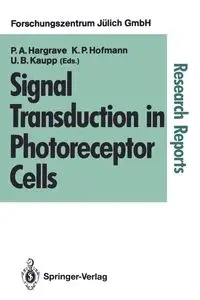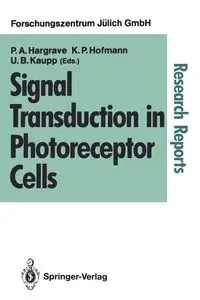Signal Transduction in Photoreceptor Cells - Hargrave Paul A.
Signal Transduction in Photoreceptor Cells - Hargrave Paul A.
- Proceedings of an International Workshop Held at the Research Centre Jülich, Jülich, Fed. Rep. of Germany, 8-11 August 1990
EAN: 9783540537656
Marka
Symbol
640HKN03527KS
Rok wydania
1992
Strony
336
Oprawa
Miekka
Format
15.6x23.4cm
Redakcja
Hargrave Paul A.
Język
angielski

Bez ryzyka
14 dni na łatwy zwrot

Szeroki asortyment
ponad milion pozycji

Niskie ceny i rabaty
nawet do 50% każdego dnia
Niepotwierdzona zakupem
Ocena: /5
Marka
Symbol
640HKN03527KS
Kod producenta
9783540537656
Rok wydania
1992
Strony
336
Oprawa
Miekka
Format
15.6x23.4cm
Redakcja
Hargrave Paul A.
Język
angielski

This volume contains manuscripts based upon talks presented at the International Symposium on Signal Transduction in Photoreceptor Cells which was held at the Forschungszentrum Jiilich August 8-11, 1990. * The meeting
was dedicated to the memory of Hermann Kuhn who made major contributions to our understand ing of transduction pathways in visual cells. Presentations at the meeting were organized around the following topics: (1) Rhodopsin
Structure and Function, (2) Transducin and Phosphodiesterase, (3) Arrestin and Kinase, (4) The cGMP-gated 2 channel, (5) Role of Ca + in Photoreceptors, and (6) Transduction in Inverte brates. In a Plenary Lecture, D.
Oesterhelt (Martinsried, FRG) described the sen sory transduction system of the halobacteria. These primitive organisms employ several retinal-containing pigments for sensory and ion-translocation purposes. Their study is
intrinsically interesting as well as serving as potential models for the understanding of more complex systems. Study of the structure and function of rhodopsin has been greatly aided by use of the methods of molecular
biology. T. Sakmar (Cambridge, MA, USA) described his use of site specific mutagenesis to make systematic substitutions of charged residues in the transmembrane helices of rhodopsin, leading to iden tification of the
particular glutamic acid residue that serves as a counterion for the protonated Schiff base. Vertebrate rhodopsin has also been cloned and ex pressed in the baculovirus system, (W. DeGrip, Nijmegen, The Netherlands) which
should facilitate production of sufficient quantities of mutant rhodopsin to allow biophysical studies.
EAN: 9783540537656
EAN: 9783540537656
Niepotwierdzona zakupem
Ocena: /5
Zapytaj o produkt
Niepotwierdzona zakupem
Ocena: /5
Napisz swoją opinię

